It is common knowledge that dogs are easier to train because it is in their nature to please a master; while cats are more independent and difficult to control.
Even though many people would find it embarrassing to take a cat backpacking and put it on a leash – it is still possible. In this article we are going to show you a guide on how to turn hiking with cats into a pleasant and enjoyable experience.

If you have got a cat and you want to bring her with you, then make sure to keep on reading!
Choose a Destination and Prepare a Plan
Before you set on a journey with your feline friend, make sure to perform a research beforehand on the area you plan to visit. You should be aware of the wildlife and potential dangers your cat might run into. Yes, cats are usually very hardy and can adapt to various environments, but that mostly depends on the breed. Some of the cat breeds are known as sensitive and cannot withstand high or freezing temperatures. The long-coated cats would not do well in a desert-like area without any shade while the short-coated cats would not do well in freezing temperatures, high in the mountains. That is why, before you go, make sure that:
- Your cat is physically able to withstand the whole journey.
- You are familiar with the area you plan to visit.
- You perform a research and plan everything beforehand.
- You bring everything you need for both you and your pet.
- Consider the weather.
- Stay safe.
If you are sure that your cat is healthy and physically able to endure the whole trip, then you need to make sure to bring the whole gear and other hiking necessities with you.

This time you are not traveling alone, so there are very important things to consider.
How to Prepare Your Cat for Traveling
Not every cat is suited for the life outdoors, but even if that is the case you need to properly train your cat. That might seem like an impossible task for you, but with patience and strong will you can do it. This means that before you even start buying hiking essentials, you will have to teach your cat to obey your commands and walk on a leash.
- Make sure to start early with training, the younger the cat the easier it will be for you to teach her important things. However, if you have not started on time, then you might face some difficulties with an adult cat who won’t cooperate.
- Teach your cat to be on a leash. You do not see every day a cat being walked around on a leash, but in the wilderness it is essential to keep your cat close. As you know, cats are very curious creatures and they would easily get lost in the forest or even worse – run away. If they are used to come and go as they please at home, that must not be tolerated at the campsite. Leash trains your cat via positive reinforcement: give her treats and rewards when she keeps a harness and leash on without struggling. But do not force your cat to wear it because you will never teach her to like it.
- Teach your cat to use a carrier as a safe space. Instead of associating a carrier with a punishment, your cat should have been trained to like the carrier and use it as a place where she rests away from any noise. Since you will be keeping your cat in a carrier a lot (during the car traveling, etc.), she needs to get used to it.
- Make sure to microchip and ID your cat before you go. If the worst happens and your cat gets lost or stolen, the microchip might help you to identify her and find her sooner. The collar with a contact info is a great idea as well, but the microchip is a safer solution.
- In order to prepare your cat for the big journey, you should make her used to it by taking her on short trips Put her in a carrier as often as possible, and show her that it is not a big deal and that she is safe as long as she is with you.
- Since you are not going alone anymore, make a separate gear list for your feline friend. You should create a checklist for everything your cat might need, from food to medicine.
- You should understand your cat and the signs she gives you. As an owner, you should be able to tell when your cat is acting weird, when she is hungry, thirsty or needs to use a bathroom. It might be crucial to be able to read these signs in the wilderness – if your kitty gets hurt, you would need to help her immediately.
- Train your cat to come when you call her. This is very important because if she gets lost, or she wanders around, she must come when you call her. It is recommended to never put your cat off leash at the campsite, but if you do, it will come in handy for you not to chase the cat around. If you start training her since she is a kitten with positive reinforcement, you might succeed.
- Make sure to make and bring with yourself, your cat’s photograph. If she gets lost, you can keep it on your phone or as a real photo and show it around in case she gets lost.
- Many wild plants are toxic for your cat, so make sure to keep an eye on her in case she eats something weird.
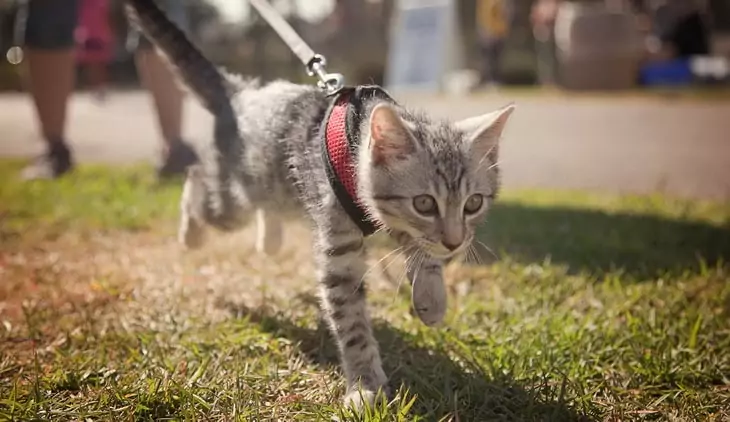
The Most Important Gear
After you have decided on the destination and made sure that your cat is all good and ready to go with you, it is time to pack. Here are some of the most important gear necessities that you must not forget:
Hydration
Hydration is important not only for you, but your feline pet as well. You need to bring as much potable water as you can. This is very crucial if you decide to hike somewhere where the temperatures are scorching and where you will sweat a lot. Do not rely on rivers and streams, even for your cat, because they might not be safe to drink. See our article on the benefits of a Sawyer personal bottle filter and find out how it can make water potable for you and your feline friend.
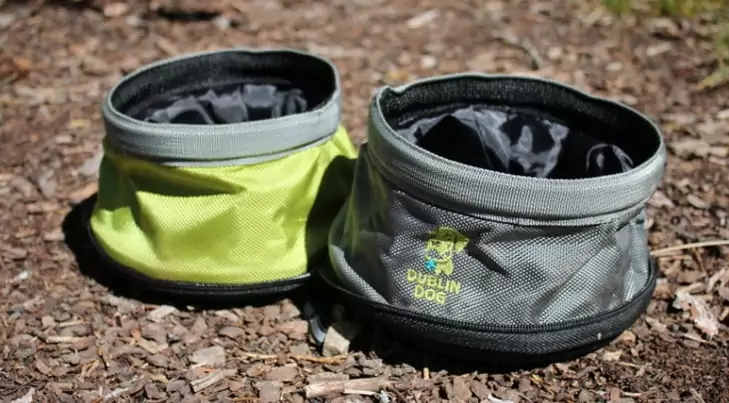
You can go for a collapsible water bowl that would make drinking easier for your cat and do not forget, cats are susceptible to waterborne diseases as much as people. Even if you decide to hike in the cold weather, you will need to keep hydrated.
Nutrition
Make sure to bring more food than you usually feed your cat at home because both of you will be burning more calories than usual. Since you will be bringing tasty snacks with calories to keep you refueled, bring some snacks for your cat as well. It is better to have enough food than to be hungry and collapse.

As for the type of food, bring the same type you feed your cat at home because if you switch the type or brand, she might refuse to eat or get her stomach sick. An adult cat needs at least 250-300 calories per day to maintain her health and weight; but keep in mind that she will need even more while hiking.
Navigation
Navigation will be of more use to you than your kitty, but you will have to rely on maps, compass or GPS in order to travel safely. A compass is always a safer choice because it does not need batteries and it is lightweight. Here’s our piece on the top compass watches that you can use to find your way on the trail.

This is very important if you are visiting that campsite for the first time ever.
First Aid Kit
Your cat needs a First Aid Kit as much as you. Some of the most important supplies include: adhesive tapes, gauze rolls, hydrogen peroxide, ice packs, scissors, tweezers, gloves, gauze pads, blanket, towels, antiseptic wipes and many more. The kit should also contain a small guide on how to use these supplies, but it is up to you to get informed and familiar with them beforehand. Read our article on how to assemble and make your own first aid kit in order to customize it.
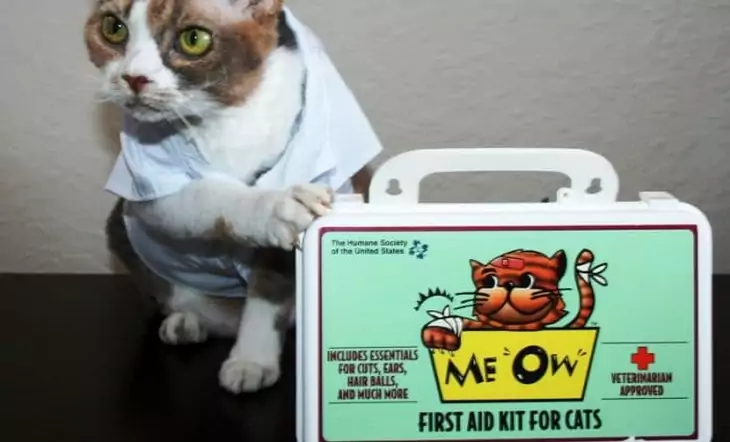
Besides the first aid kit, you should also make sure that your cat has undergone all her heartworm, flea, tick and vaccination treatments. Since she will be in direct contact with wildlife, she might get injured very fast.
As for the medicine, if your kitty suffers from motion sickness make sure to consult your vet, but never give any medicine on your own.
Sun Protection
Believe it or not, but cats can get sunburned just like humans do. If your cat has a light-colored fur, purchase a sunscreen that is approved by the pet organizations and that will protect your cat’s skin.

Just like you will be wearing an SPF sunscreen on your face and sunglasses, your cat’s ears and other parts of the body can get sunburned.
A litter box and poop bags
Before you go make sure to find out whether the place you are planning to visit is a pet friendly and whether you will have to clean after your pet. Perhaps it is forbidden to bury your pet’s waste so you will have to purchase poop bags and then dispose of them later on. On the other hand, you can purchase disposable litter boxes, if your cat prefers them more.

Do not forget that many cats contain parasites in their feces that can be very dangerous for the environment, so make sure to get rid of them properly and according to the area’s laws.
A harness and leash
Purchase a proper harness and leash that are suitable for your cat’s built. You can also add reflective LED lights to them so your cat can be visible in the dark. Nowadays, many pet stores sell amazing reflective leashes that can be bought for a reasonable price.
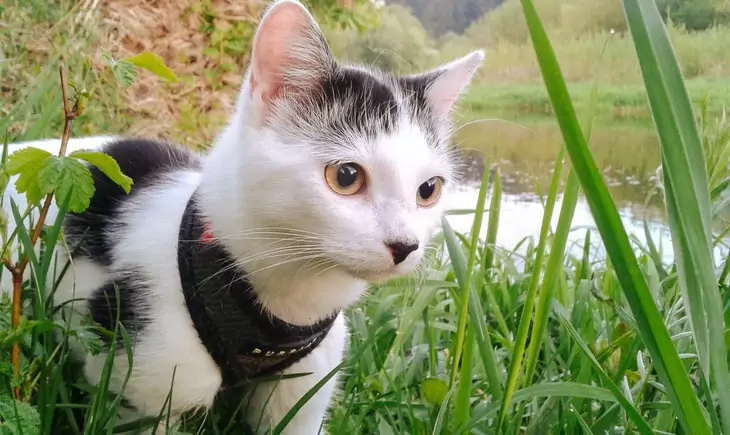
They can come in handy, and you will feel more relaxed for being able to spot your cat during the night.
Clothes
You will need to buy proper clothes for your cat. That might include a warm sweater if your cat is short-coated and you are hiking in the winter; and a waterproof raincoat in case a storm or rain surprise you.

If your cat does not need warm clothes, then a proper waterproof raincoat with insulation should be a must. It can get chilly in the nights, and a proper coat might protect her from getting sick.
A transporter or carrier
It is impossible to go on a trip with your cat without bringing a transporter. That should not be a place where she is sent and punished, but a safe place where she can rest and be safe during the car traveling.
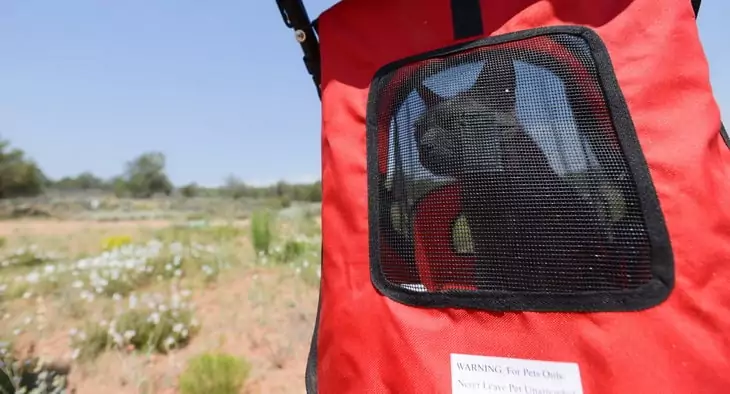
Your cat might want to go into a carrier at the campsite if she wants to sleep and that is why you should provide her with a place of her own.
Toys and blankets
In order for your kitty to feel comfortable, bring her favorite toys and blanket with you.

She will feel like a part of the home is with her and she won’t feel anxious.
A Cat Backpack
Many cat owners go for pet backpacks that allow them to carry their cats on their backs. These pet backpacks are stable, secure and provide ventilation and warmth. However, before you buy this type of a cat carrier, you should be aware of your cat’s temperament. If she is not a pet who would handle being “trapped” inside a huge backpack, then you might consider creating a DIY cat platform instead.

This platform cannot be purchased, but you can make it by yourself – put a PVC made canvas on top of your backpack and secure it with straps. Your cat can ride on it without being scared of a confined space.
What to Do at the Campsite
We have discussed what to do before you go on a journey and what to do while traveling with your cat, but here are some tips for the campsite.
- Make sure to keep your kitty in a carrier or on a leash, especially if your cat is not trained to come when you call her. You know your cat’s temper – if her curiosity always gets the better of her then make sure to keep an eye on her. Cats are predators and they easily get distracted by everything – but they also get into trouble because of that.
- Do not tie your cat and then leave her unattended. This is cruel and very dangerous. If you are not ready to take care of your pet and keep an eye on her all the time, then do not bring her with yourself in the first place. If you leave your cat tied up and an animal attacks her, she will most likely die or get severely injured. It is better to keep her in a carrier for a period of time if you have to leave her unsupervised.
- Keep your cat away from the campfire. As we already said, cats are curious. Well, their curiosity might prompt them to get close to the fire and play with it, even if they are on a leash. In order to prevent that keep your cat close to you and do not allow her to get too close to the fire. The same applies to tools such as knives, keep them away from your cat.
- Try to maintain the usual schedule. Feed your feline friend at the usual time and play with her when you usually do. It is not easy to do this when you are hiking all they long, but make sure to create breaks to feed your cat and give her water. Set an alarm and you are ready to go!
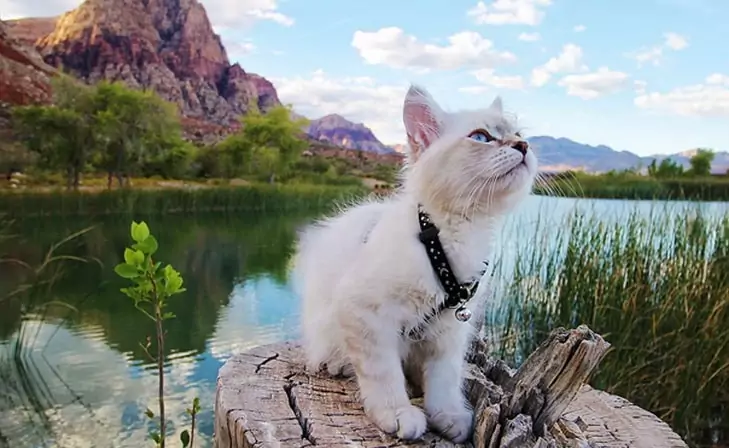
Final Thoughts
To sum up, we have covered the most important info regarding hiking with cats. Feline pets are very different from dogs and you should be aware of your cat’s temperament and challenges that come when training her. It might be even harder if you have not started leash training your cat from an early age, but it is never too late to at least try. Make sure to research the area and campsite you plan to visit beforehand.
Get yourself familiar with the first aid kit, toxic plants, dangerous animals and insects that might lure around and the weather. After the initial research you can start purchasing gear essentials and buy everything you and your kitty might need. That includes food, potable water, a harness and leash, proper clothes, a transporter and many more. Make sure to always keep an eye on your cat since the wilderness can be a great temptation for any cat and their curious nature.
For added safety, read our previous article on how to keep bears and wild animals away from your campsite.
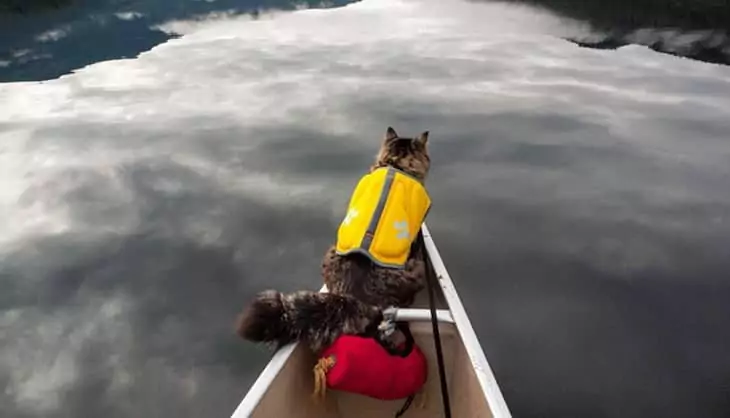
After you have covered everything that you need to buy and prepare, do not forget to have fun with your furry friend! Thanks for reading and if you have any questions, do not hesitate to ask them in the comment section below.

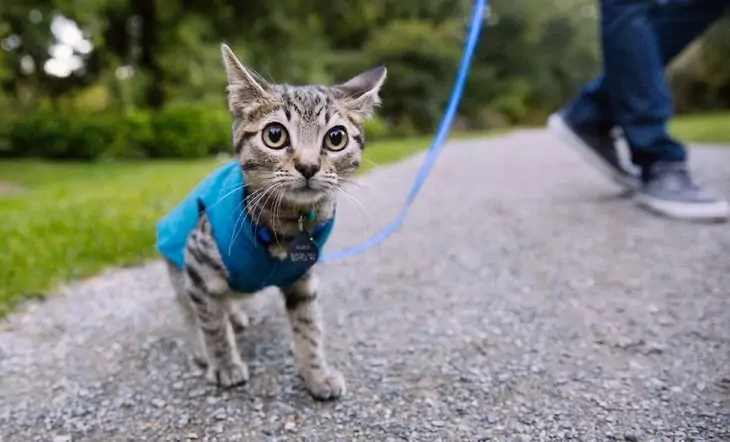






Going camping with a cat can be quite a challenge especially if it is the first time for the cat. I do not know how long the cat might take to adjust to her new environment, but I am sure one ought to keep the cat in its carrier or on a leash because there is no telling what the cat can do or go in the woods. Overall, I think the tips listed here are quite helpful for anyone who might want to try out this.
Thanks!